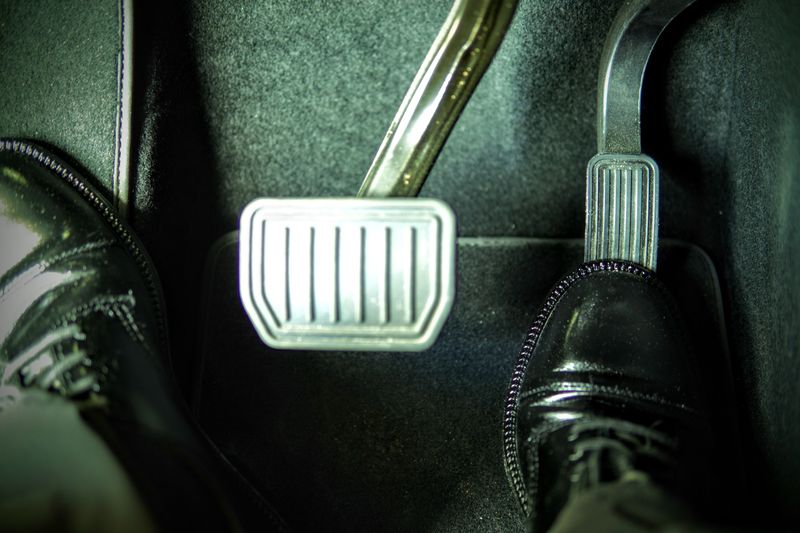How To Improve Your Credit Score in 5 Key Areas – Technologist
Are you looking to improve your credit score in 2024? Join the club!
This mystical three digit number can be as difficult to understand as it is essential to a healthy financial life.
In this article, I’m going to help you gain a better understanding of how your credit score works so that you can take some tangible steps toward a higher number. Before we get started, make sure you have a way to access your score for free.
Note: If you have a score of 740 or higher, you may already be doing most of the things I’m going to mention in this article. You may instead want to read this article, which features advice from credit score experts on getting your score into the 800s.
How To Improve Your Credit Score in 5 Key Areas
There are several different types of credit score, but our discussion today will center around one of the more popular credit score measurements: FICO Score.
FICO Scores are used by many of the top lending institutions in the United States to assess your creditworthiness. The score is on a scale of 300 to 850, with 670 being the target for a “Good” rating.
This score is calculated by evaluating factors in five key areas of your financial behavior:

If you’re struggling with your score, there may be some issues from your past financial decisions that are weighing you down. It may take some time to minimize the impact of those missteps, but there are things you can do to expedite the process.
And there may also be some simple steps you can take to boost your score quickly that you didn’t even know you were missing.
Let’s take a look at ways you can improve your rating in each of these areas:
1. Payment History (35% of your FICO Score)
FICO’s Definition: “Payment history shows how you’ve paid your accounts over the length of your credit. This evidence of repayment is the primary reason why payment history makes up 35% of your score and is a major factor in its calculation.”
By percentage, this is the most impactful portion of your FICO score. And that’s understandable since it’s based on you demonstrating your abilities to pay your creditors.
FICO says the following payment types should be impacting your score: Mortgage loans, credit cards, installment loans, finance company accounts and retail accounts. And any defaults or bankruptcies will impact this portion of your score for up to 7 years.
This portion of your score is based on things you’ve done in the past, so the action items for improving in this area of the score are time-based and will require some patience to see results.
Tips for Improvement
- Pay your bills in full and on time. Every time. This probably seems like common sense, but it really is the number one way to make sure this area of your credit score improves over time. Even a single late or missed payment can send this portion of your credit score spiraling downward. It can take many months to recover. You can’t erase a poor payment history, but you can start an upward trend by righting the ship and staying consistent with on-time payments. Setting up auto payments on bills can be a good “safety net” solution if you are worried about missing a payment.
- Make sure all of your eligible bill payments are being reported. You know that creditors are going to ding you for bad behavior, but you also need to make sure you’re getting full credit for all your successful payments along the way. To do this, get access to your credit report for free and take inventory of payments being reported. If something is missing, you’ll want to contact the creditor to inquire about their reporting methods to ensure you’re getting the credit you deserve.
2. Amounts Owed / Credit Utilization (30% of your FICO Score)
FICO’s Definition: “In a very general sense, Amounts owed refers to how much debt you carry in total. However, the amount of debt you have is not as significant to your credit score as your credit utilization. When a high percentage of a person’s available credit is been used, this can indicate that a person is overextended, and is more likely to make late or missed payments.”
This portion of your credit score is ripe for controllable improvements. As mentioned above, your utilization ratio (amount of credit used vs. amount of available credit) is a key factor for the credit score.
The lower you keep that number, the better your score is going to be. I have a few tips to help you keep this number in good shape.
Tips for Improvement
- Set your utilization target for 10% or less. Credit score expert Beverly Harzog says keeping your individual account and overall credit utilization totals under 30% is best for staying out of credit score trouble. But she says that limiting utilization on all open accounts to 10% or less can significantly accelerate increases to your credit score. Also, it’s worth noting that FICO says responsibly utilizing a small percentage of your credit is better for your score than not using the credit at all.
- Accept credit limit increases whenever possible. Credit card issuers will sometimes offer you a chance to increase your available credit on a card. When it comes to your credit utilization ratio, this is a gift. An easy example of how this could work in your favor: $100 usage of a $1,000 credit limit is 10%, but that same $100 usage on a $5,000 credit limit is just 2%.
- Make your monthly payments just before your creditor reports to the bureaus. Another tip from Harzog is to find out when your credit issuer reports payment history each month and then time your payments up to process just before that date. Doing this will result in them reporting a very low utilization score for you because your balances should be at their lowest point just after that payment.
- Balance out utilization ratios whenever possible. The ratios of both your individual and overall lines of credit are a part of this evaluation process. For optimal results, you’ll want to make sure that no one account has a large balance relative to its total line of credit. For example, it’s better to have two balances at 20% utilization than one at 10% and another at 50%.
3. Credit History Length (15% of your FICO Score)
FICO’s Definition: “When it comes to length of credit history, your FICO Scores take the following into consideration: 1) How long specific credit accounts have been open and 2) How long your credit accounts have been open including the age of your oldest account, the age of your newest account, and an average age of all your accounts.”
This is another one that relies heavily on what you’ve done in the past, but we do have a couple of easy tips to keep this 15% of your credit score in decent shape.
Tips for Improvement
- Keep credit card accounts open, even if you don’t use them anymore. We’ve all been there. We’ve outgrown a credit card that had crummy rewards and moved on to something better. Or, we’ve chased an awesome welcome bonus with a credit card that is otherwise useless to us. It’d be easy to chop those cards up and cancel the account. But you’ll actually benefit from keeping these accounts open. The older the card is, the more important it is to keep it open.
- Pick a small bill and set it up for payment with your old credit cards. You deciding to keep your old, seldom-used credit card accounts open is usually not going to be enough. If the card issuer detects that you’re not using their card anymore, they may be inclined to eliminate risk by closing your account. To try to avoid this, you can show steady purchases each billing cycle by paying a bill or two with your old card. This helps your credit history and it also helps your payment history. A double credit score win!
4. New Credit (10% of your FICO Score)
FICO’s Definition: “New credit makes up 10% of a FICO Score. When you apply for new credit, inquiries remain on your credit report for two years. FICO Scores only consider inquiries from the last 12 months.”
Tips for Improvement
- Try to limit yourself to one new credit account per 12 months. If you apply for a bunch of different lines of credit in a short period of time, it’s seen as a red flag to potential creditors. To avoid appearing as a risk, you can take advantage of FICO’s policy of only considering new credit inquiries from the last 12 months.
- Take advantage of the grace period for rate shopping. Don’t step halfway into a big loan decision. If you’re shopping around for something like a car loan, you’re likely going to receive a temporary ding on your credit score as the creditor pulls your credit report to assess your eligibility. But the FICO Score formula is set up to allow rate shopping, so you could use a 30-day window to look around for the best rate and your score should just reflect a single inquiry. If you wait to shop around outside of that window, you run an increased risk that it will appear as a separate inquiry that will ding your credit a second time.
5. Credit Mix (10% of your FICO Score)
FICO’s Definition: “The types of credit you have are known as your credit mix. They can include a mix of accounts from credit cards, retail accounts, installment loans, finance company and mortgage loans.”
Tips for Improvement
- Make sure you understand the difference in installment credit versus revolving credit. And make sure you have a little of both. This is a small sliver of your credit score, but it could be an area you could see incremental improvement in if you achieve a little balance. Revolving credit is typically debt on things like credit cards, home equity lines of credit or store credit programs. Installment credit is a monthly payment owed on loans like mortgages, car loans or student loans. Being overly reliant on revolving credit may pose a risk for your score, so finding a healthy blend of both types of credit is the best way to maximize this 10% of your score.
Do you have some experience with improving your credit score? We’d love to hear your tips for success in the Clark.com community.
The post How To Improve Your Credit Score in 5 Key Areas appeared first on Clark Howard.

